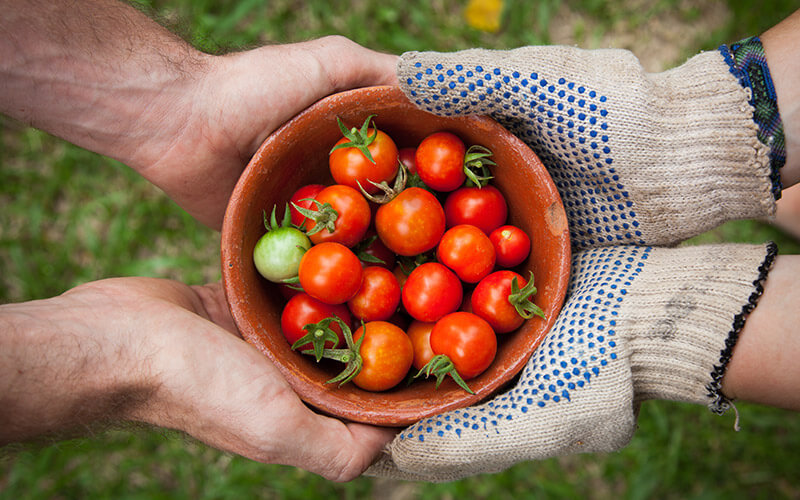Growing a thriving tomato flower garden is a rewarding experience‚ offering both beauty and delicious produce. However‚ achieving optimal growth and abundant yields requires proper fertilization. Understanding the specific needs of your tomato plants and choosing the right fertilizer are crucial steps. This guide will provide you with everything you need to know about fertilizing your tomato flower garden‚ from selecting the best fertilizer to applying it effectively‚ ensuring a bountiful harvest and vibrant blooms.
Understanding Tomato and Flower Nutritional Needs
Tomatoes and flowers have different nutritional requirements. Tomatoes are heavy feeders‚ requiring a balanced supply of nitrogen‚ phosphorus‚ and potassium (N-P-K)‚ especially during fruit development. Flowers‚ while also needing N-P-K‚ may benefit from slightly different ratios depending on the specific flower type. Understanding these needs is key to selecting the right fertilizer.
Essential Nutrients for Tomatoes
- Nitrogen (N): Promotes leafy growth and overall plant vigor. Too much can lead to excessive foliage and reduced fruit production.
- Phosphorus (P): Essential for root development‚ flowering‚ and fruit set.
- Potassium (K): Important for fruit ripening‚ disease resistance‚ and overall plant health.
Essential Nutrients for Flowers
- Nitrogen (N): Encourages healthy foliage growth.
- Phosphorus (P): Promotes abundant blooms.
- Potassium (K): Contributes to strong stems and vibrant flower colors.
Choosing the Right Fertilizer
Several types of fertilizers are available‚ each with its own advantages and disadvantages. Consider the following options:
- Granular Fertilizers: Easy to apply and provide a slow-release source of nutrients. Look for a balanced N-P-K ratio or one specifically formulated for tomatoes.
- Liquid Fertilizers: Quickly absorbed by plants‚ providing an immediate boost. Ideal for addressing nutrient deficiencies.
- Organic Fertilizers: Derived from natural sources‚ such as compost‚ manure‚ and bone meal. Improve soil health and provide a slow-release source of nutrients.
Fertilizing Schedule and Application Methods
The timing and method of fertilizer application are crucial for maximizing its effectiveness.
When to Fertilize
- At Planting: Incorporate a slow-release granular fertilizer into the planting hole.
- After Fruit Set: Begin feeding with a balanced liquid fertilizer every 2-3 weeks.
- During Blooming (Flowers): Apply a fertilizer formulated for flowers to encourage abundant blooms.
Application Methods
- Side-dressing: Apply granular fertilizer along the sides of the plants‚ a few inches away from the stem.
- Foliar Feeding: Spray diluted liquid fertilizer directly onto the leaves. This is best done in the early morning or late evening to avoid leaf burn.
- Soil Drenching: Pour diluted liquid fertilizer around the base of the plant.
Factoid: Over-fertilizing can be just as harmful as under-fertilizing. Too much fertilizer can burn the roots and leaves‚ leading to stunted growth or even death. Always follow the instructions on the fertilizer label.
Tips for Success
- Test Your Soil: A soil test can reveal nutrient deficiencies and pH imbalances‚ allowing you to tailor your fertilization program accordingly.
- Water Regularly: Water helps the plants absorb nutrients from the soil.
- Monitor Your Plants: Look for signs of nutrient deficiencies‚ such as yellowing leaves or stunted growth.
FAQ: Fertilizing Tomato Flower Gardens
Q: How often should I fertilize my tomato plants?
A: Typically‚ you should fertilize at planting‚ then every 2-3 weeks after fruit set with a balanced liquid fertilizer.
Q: Can I use the same fertilizer for my tomatoes and flowers?
A: While a balanced fertilizer can work for both‚ consider using a fertilizer specifically formulated for tomatoes during fruit development and one for flowers during their blooming period.
Q: What are the signs of over-fertilization?
A: Signs of over-fertilization include yellowing or browning leaf tips‚ stunted growth‚ and salt buildup on the soil surface.
Q: Is organic fertilizer better than synthetic fertilizer?
A: Both have their advantages. Organic fertilizers improve soil health and provide a slow-release source of nutrients‚ while synthetic fertilizers offer a more precise and readily available nutrient supply.
Q: What is blossom-end rot and how can I prevent it?
A: Blossom-end rot is a condition caused by calcium deficiency‚ resulting in a dark‚ sunken spot on the bottom of the tomato. Prevent it by ensuring adequate calcium levels in the soil and consistent watering.

